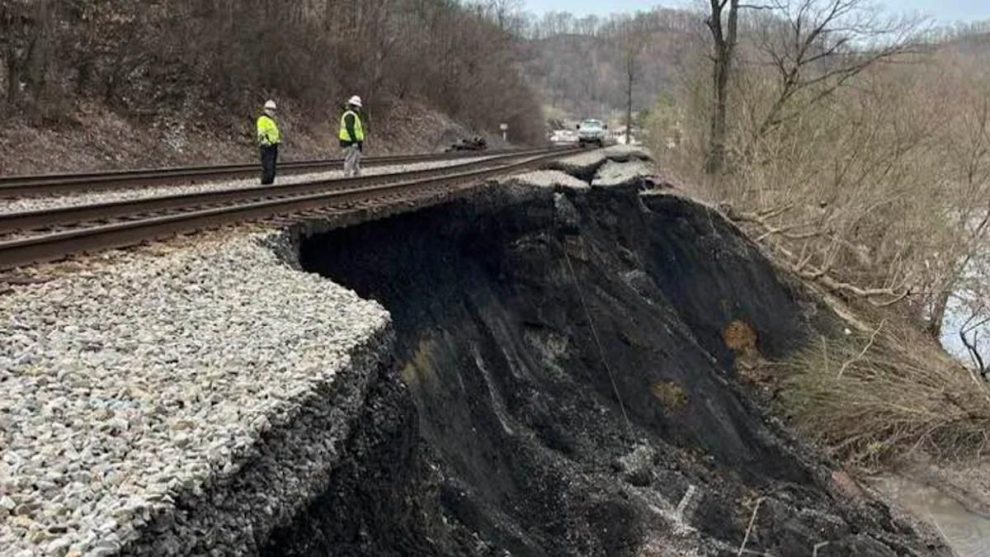Norfolk Southern posted higher profits in the first quarter despite flat revenue and the impact of harsh winter weather.
“There’s a lot to be pleased with this quarter,” CEO Mark George said, including delivering financial results in line with expectations despite a “vicious winter” that included 18 storms.
“Our network resiliency was evident again thanks to great planning and execution by our team,” George told investors and analysts on the railroad’s Wednesday morning earnings call.
Adjusted for the ongoing financial impact of the 2023 East Palestine, Ohio, derailment, the railroad’s first-quarter operating income increased 6%, to $961 million, on flat revenue of $2.9 billion. The operating ratio improved 2 points, to 67.9%. Adjusted earnings per share was up 8%, to $2.69.
Despite uncertainty regarding tariffs and the potential for an economic slowdown, NS (NYSE: NSC) is sticking with its forecast of 3% revenue growth for the year, along with 1.5 points of improvement to its operating ratio. “At this time, there’s no clear information on how tariffs may impact our end markets and revenues,” George said.
About 75% of Norfolk Southern’s traffic is domestic business. “How tariffs play out is going to be hard to say, but I don’t think it’s going to be as meaningful as the risk we have on the broader economy,” he said.
Thanks to improved service, NS continues to regain market share lost during congestion related to crew shortages in 2021 and 2022 and the East Palestine derailment. And the ongoing share gains may help insulate NS from the economic fallout of tariffs or a recession.
“Our intense focus on recapturing market share gives us confidence that we are well positioned to mitigate some of the uncertain market conditions that we see,” Chief Commercial Officer Ed Elkins said.
Operating expenses declined by 3% in the quarter thanks to $55 million in savings from labor productivity improvements, which more than offset the $35 million in costs related to winter storm repairs on its Heartland Corridor in West Virginia.
A February storm caused flash flooding on the Tug River, affecting a 100-mile stretch of the Pocahontas District west of Bluefield, West Virginia, which carries 50 trains per day. NS was able to repair more than three dozen washouts and bridge damage over a four-day period.
“I’m never satisfied with how the operating environment is at any given time. So that’s a curse my team has to endure. But I can tell you I’m very, very pleased at the strength and resilience that we demonstrated coming out of the storms,” Chief Operating Officer John Orr said.








Add Comment